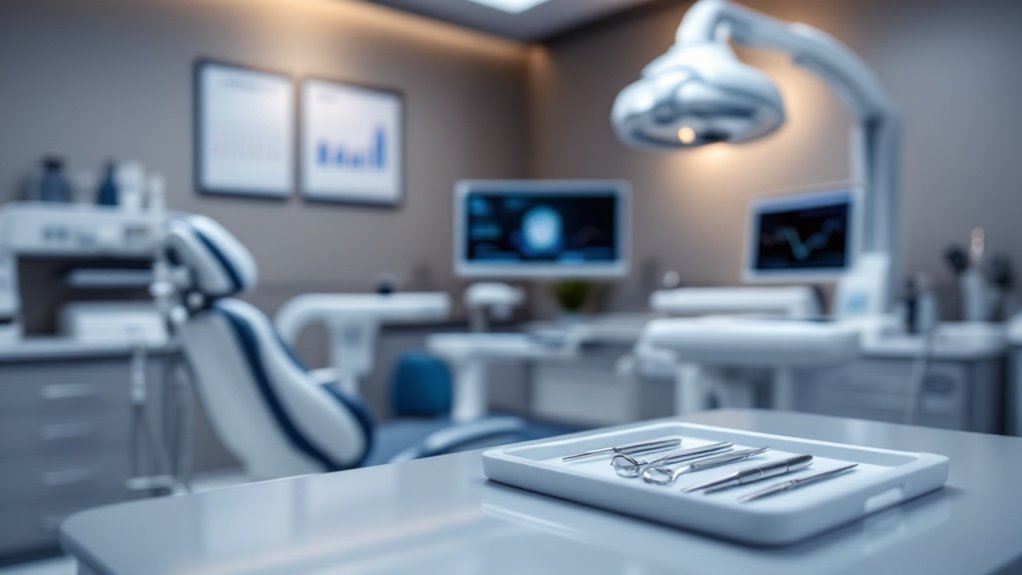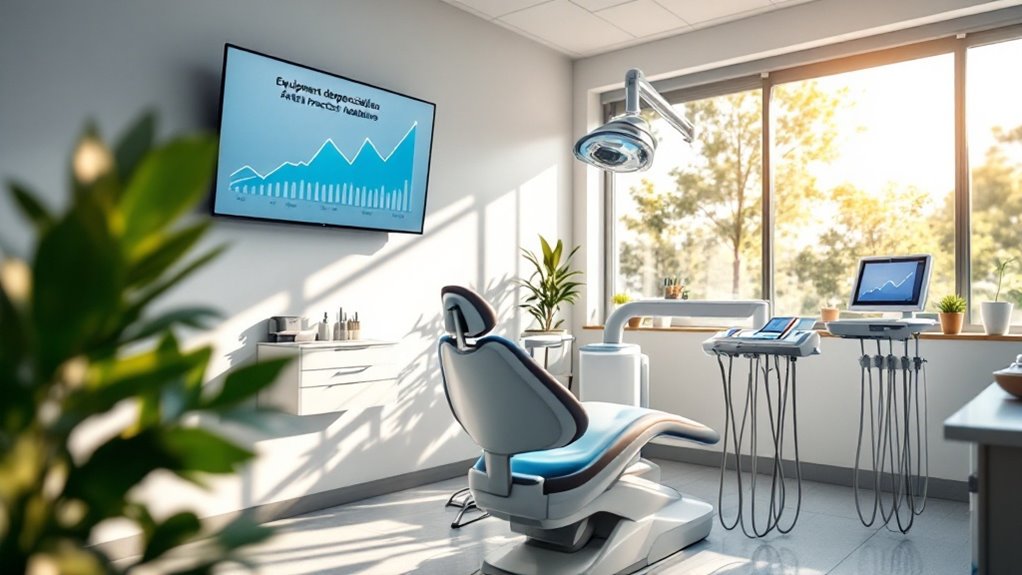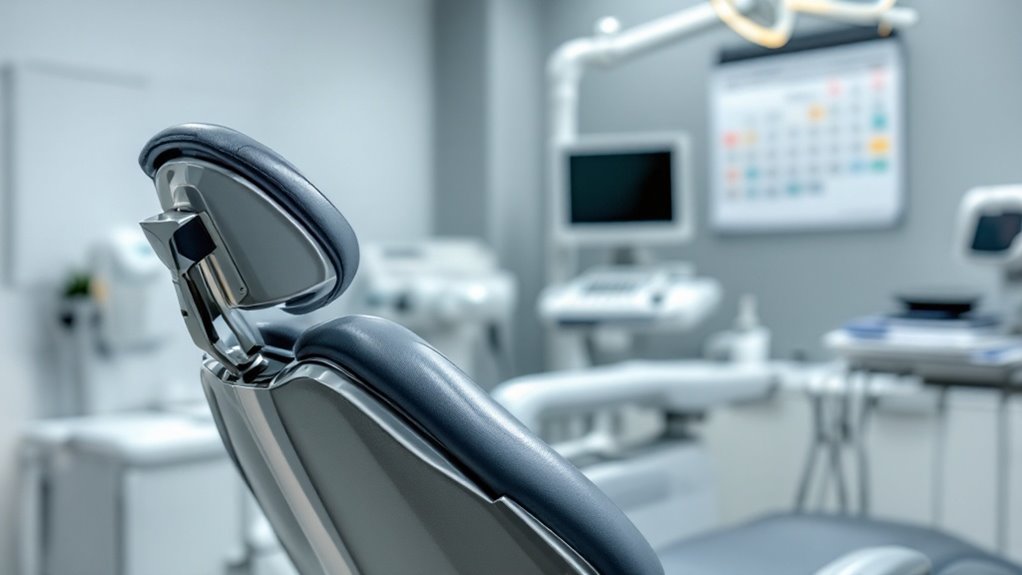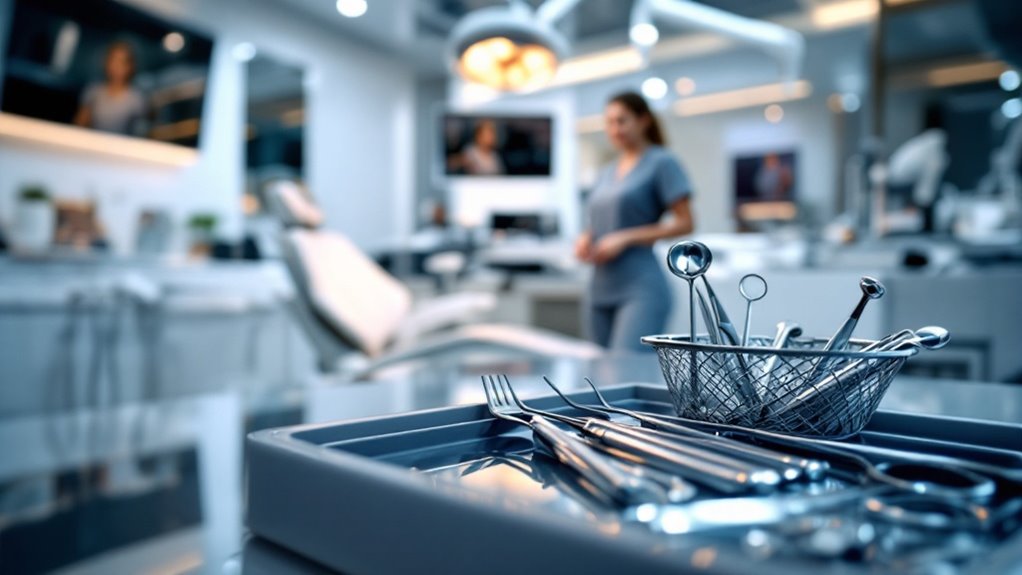You might not realize that ignoring equipment depreciation can greatly skew your dental practice's financial health. By understanding how depreciation impacts your financial statements, you can make more informed decisions about your assets. It's not just about keeping your books in order; it also plays an essential role in tax mitigation and improving your practice's valuation. If you want to guarantee your practice remains financially sound and poised for growth, consider how an all-encompassing grasp of depreciation can be a game changer.
Key Takeaways
- Equipment depreciation allocates costs over useful life, enhancing financial planning and cash flow management for dental practices.
- Accurate depreciation lowers taxable income, benefiting overall financial performance and tax obligations.
- Depreciation impacts financial statements, providing a realistic view of asset value and practice health.
- Well-documented depreciation supports informed decision-making regarding equipment upgrades and investments.
- Understanding depreciation aids in practice valuations, influencing negotiations with potential buyers or investors.
Understanding Equipment Depreciation

Understanding equipment depreciation is crucial for dental practices, as it directly impacts your financial health. This process allocates the cost of your dental assets over their useful life, reflecting a realistic asset value on your balance sheet.
Common useful lives for equipment are five years for general items and seven years for furniture, which aids in tax planning and financial forecasting. By utilizing methods like the Straight-Line Method or MACRS, you can optimize tax deductions and manage cash flow effectively.
The IRS even allows a Section 179 Deduction for qualifying equipment, enabling a full deduction in the initial year if used primarily for business. Accurate tracking of accumulated depreciation is essential for informed decision-making regarding future equipment upgrades.
Importance for Financial Statements
While it might seem like a small detail, the way you handle equipment depreciation greatly influences your financial statements. By accurately recording depreciation expense, you lower your taxable income, which can considerably reduce your tax obligations.
This not only affects your income statement but also your balance sheet, where accumulated depreciation shows the decline in your assets' book value. For practice owners, understanding this impact is crucial; it provides a realistic view of your practice's financial health.
Accurate depreciation helps gauge profitability and overall financial performance, influencing how stakeholders assess the value and investment potential of your dental practice. Proper accounting for depreciation is essential for making informed financial decisions and ensuring your practice remains financially viable.
Strategies for Tax Mitigation

To minimize your tax burden effectively, employing strategic depreciation methods is key for dental practices.
Utilizing the Section 179 deduction allows you to fully deduct the cost of qualifying dental equipment in the initial year, greatly reducing your taxable income and boosting cash flow for future investments.
Additionally, bonus depreciation lets you take an extra 80% deduction for eligible assets placed in service during 2023. Timing your equipment purchases carefully can maximize these tax benefits, lowering your overall tax burden.
Cost segregation can also accelerate depreciation for specific building components, speeding up your write-offs on renovations.
Consulting with a dental CPA guarantees you identify the best strategies tailored to your practice's financial situation, optimizing your tax planning efforts.
Methods of Depreciation
When managing the financial health of your dental practice, choosing the right method of depreciation for your equipment can greatly impact your tax situation.
You can follow a depreciation schedule using methods like the Straight-Line Method, which spreads costs evenly over five years. Alternatively, the Declining Balance Method allows for larger deductions upfront, improving cash flow initially.
The Modified Accelerated Cost Recovery System (MACRS) is widely used, offering specific rates for different asset classes, including dental equipment.
Don't forget the Section 179 Deduction, which lets you deduct the full cost of qualifying equipment in the year it's placed in service. Bonus Depreciation can also enhance your tax benefits, allowing you to deduct 80% of qualifying assets immediately.
Impact on Practice Valuations

How does equipment depreciation influence the valuation of your dental practice?
Equipment depreciation plays an essential role in establishing your practice's net asset value on the balance sheet. Appraisers factor in accumulated depreciation, giving potential buyers a clearer view of your financial health.
This understanding not only affects profitability metrics but also the perceived viability of your practice during changes. A well-documented depreciation schedule showcases your practice's long-term sustainability, which is critical for determining its market value.
By presenting an accurate picture of your equipment's worth, you can negotiate better outcomes with investors or buyers.
Ultimately, recognizing the impact of equipment depreciation on practice valuations helps you position your practice more favorably in a competitive market.
Role in Financial Planning
While equipment depreciation may seem like a mere accounting detail, it plays an essential role in financial planning for dental practices. By recognizing equipment depreciation, you can present a more realistic asset value on your balance sheet. This helps in resource allocation and future planning.
Additionally, recording depreciation as an expense lowers your taxable income, improving cash flow and providing financial flexibility. Understanding various depreciation methods, like straight-line or declining balance, enables you to make informed decisions regarding capital expenditures.
Regularly reviewing depreciation schedules aids in forecasting future financial needs, ensuring compliance with tax regulations. Ultimately, effective management of equipment depreciation supports the long-term sustainability of your practice, allowing you to plan for necessary upgrades without disrupting patient care.
Maximizing Deduction Opportunities

Effective financial planning sets the stage for maximizing deduction opportunities in your dental practice.
By leveraging Section 179, you can deduct the full cost of qualifying equipment, like chairs and X-ray machines, in the initial year, up to $1,160,000 for 2023.
Additionally, consider bonus depreciation, which offers an extra 80% deduction for qualifying purchases without a spending cap—ideal for larger practices.
To benefit, verify your equipment is placed in service by December 31, 2023, and used primarily for business.
Cash purchases simplify deductions, while financed purchases may complicate things.
Don't overlook cost segregation strategies to identify and accelerate depreciation for building components, maximizing deductions and improving your cash flow.
Take action now to reap these tax benefits!
Seeking Professional Guidance
Steering through the complexities of equipment depreciation can be overwhelming, but seeking professional guidance from a dental CPA can make a significant difference.
These experts help your dental practice navigate intricate depreciation regulations, ensuring you maximize tax deductions on your equipment investments. They can advise you on ideal methods like Section 179 and bonus depreciation, dramatically reducing your taxable income.
Furthermore, a dental CPA assists in preparing and filing Form 4562, ensuring accurate reporting and compliance with IRS regulations. Regular consultations keep you informed about tax law changes that could impact your depreciation strategy.
Frequently Asked Questions
What Is the Purpose of Depreciation of Equipment?
Depreciation of equipment helps you manage assets effectively, improve cash flow, and optimize tax implications. It aids in financial planning and informs your investment strategies, ensuring sound accounting practices for future growth and sustainability.
What Is the Depreciation Life of Dental Equipment?
Did you know dental equipment typically has a lifespan of 5 years? Factors affecting depreciation include maintenance and accounting methods. Understanding this helps you analyze tax implications and plan finances effectively for your practice's growth.
What Is the Depreciable Life of Medical Equipment?
The depreciable life of medical equipment typically ranges from 5 to 7 years, impacting asset valuation, tax implications, and financial planning. Understanding this helps you strategize equipment renewal effectively for your practice's long-term success.
When Should Equipment Be Depreciated?
You should start depreciating your equipment when it's acquired and placed into service. This impacts your depreciation schedules, affects tax implications, aids in asset management, and helps with financial forecasting and equipment valuation for practice growth.
Conclusion
In the world of dental practices, equipment depreciation isn't just a line item; it's the backbone of your financial health. Think of it as a compass guiding you through the complex landscape of taxes and valuations. By understanding and leveraging depreciation, you're not only enhancing your practice's worth but also paving the way for future investments. So, adopt these strategies, keep your financial ship steady, and watch your practice thrive in the ever-changing dental industry.


